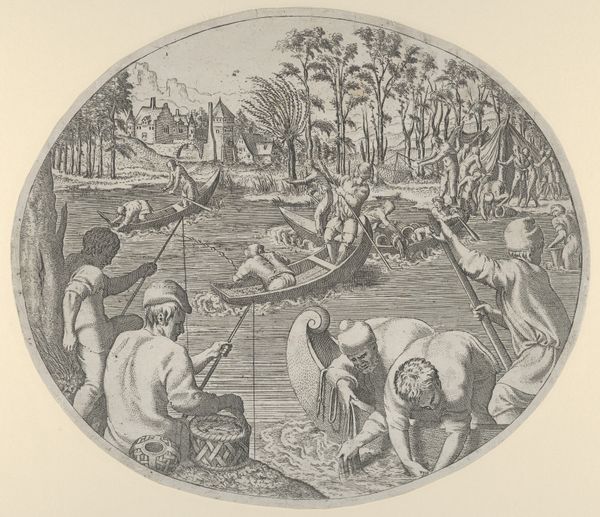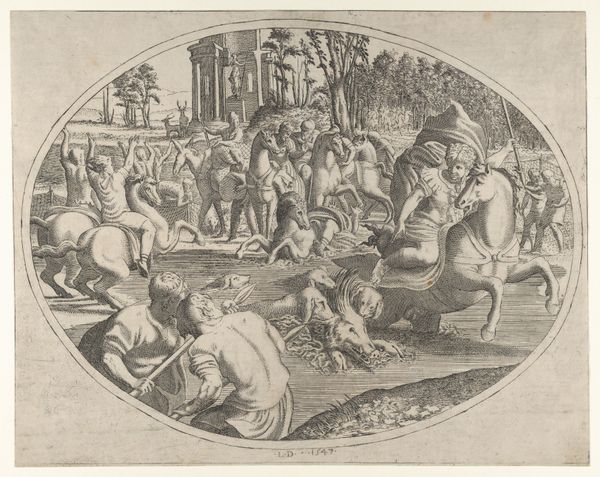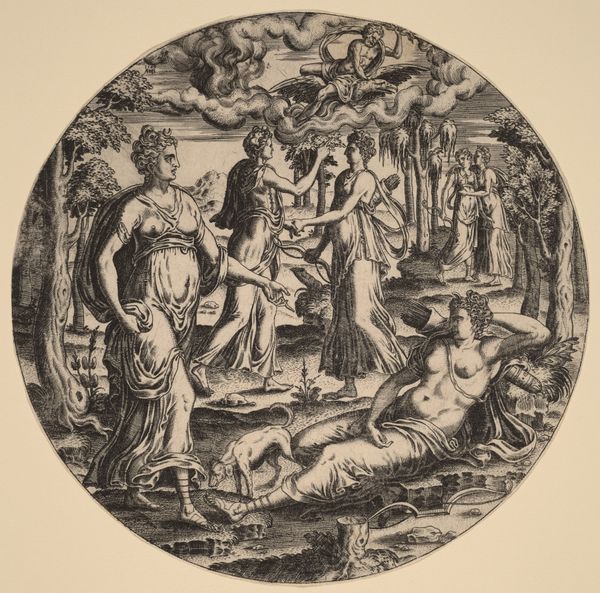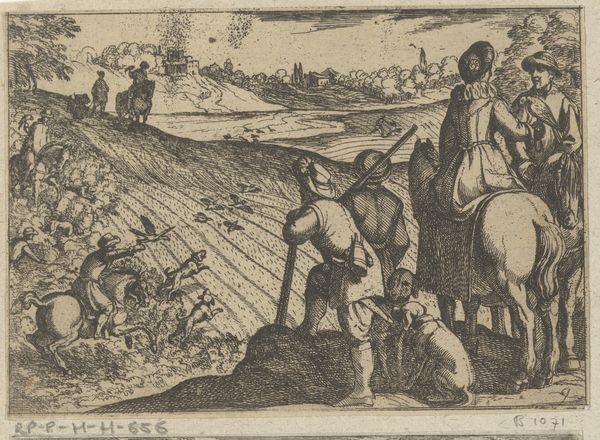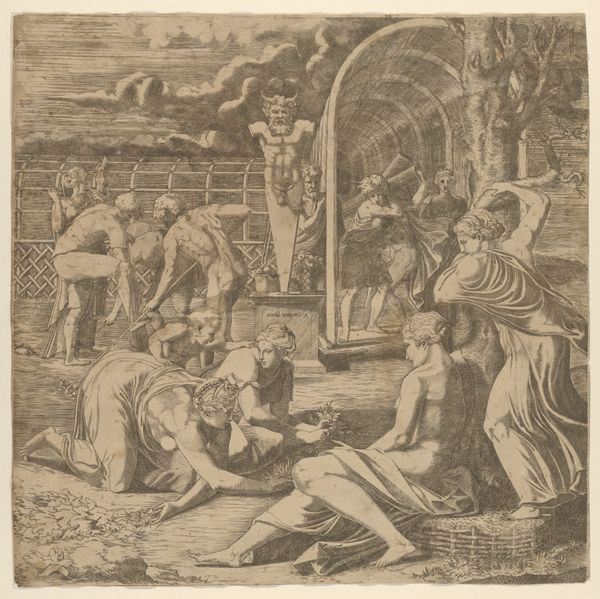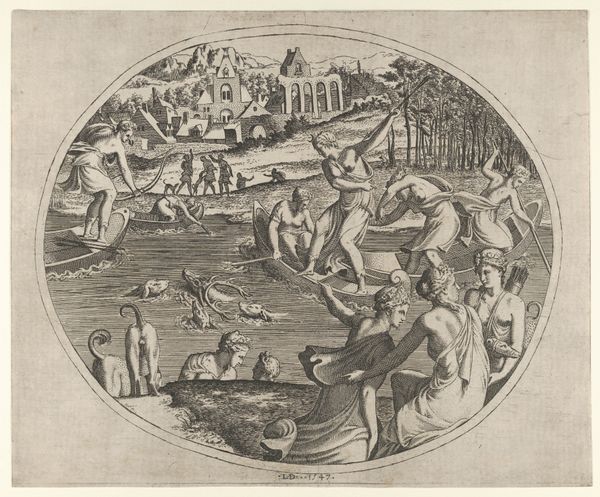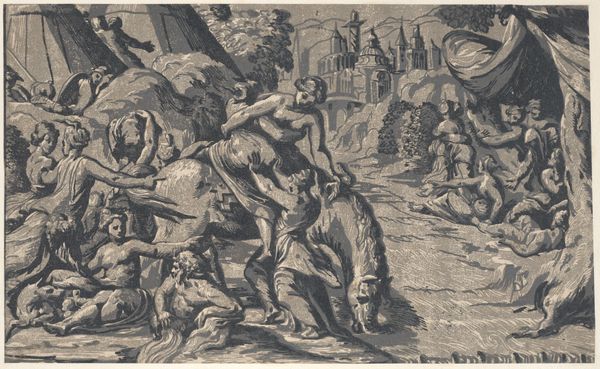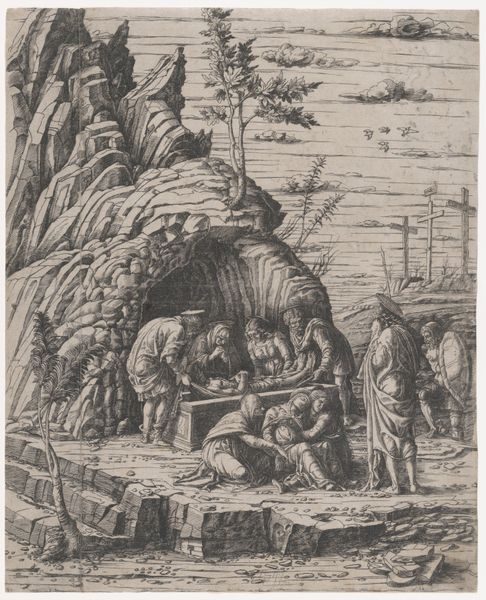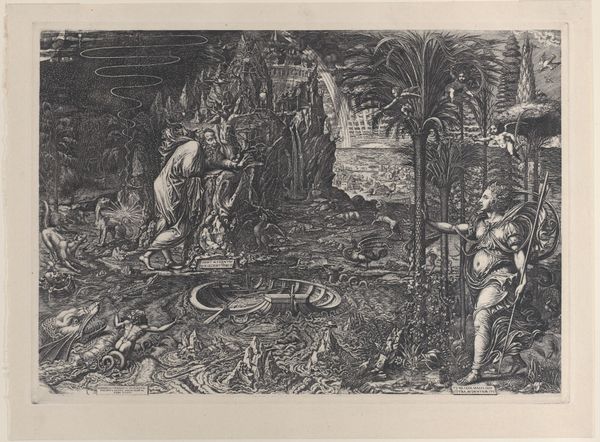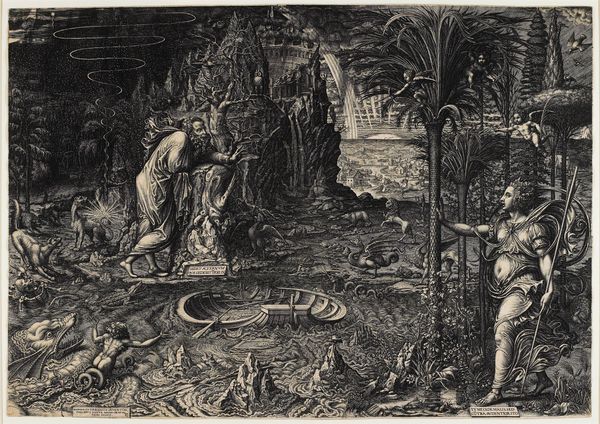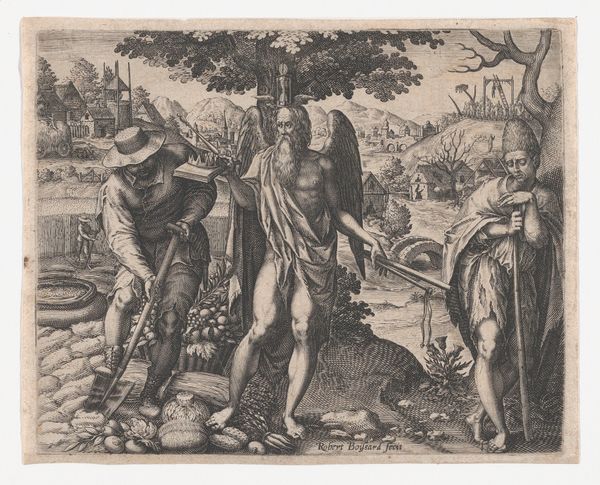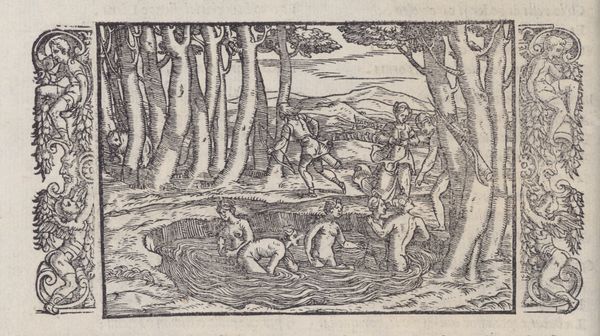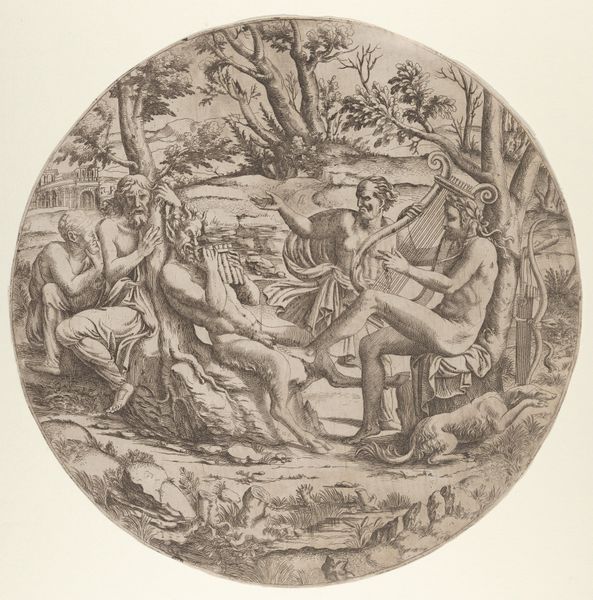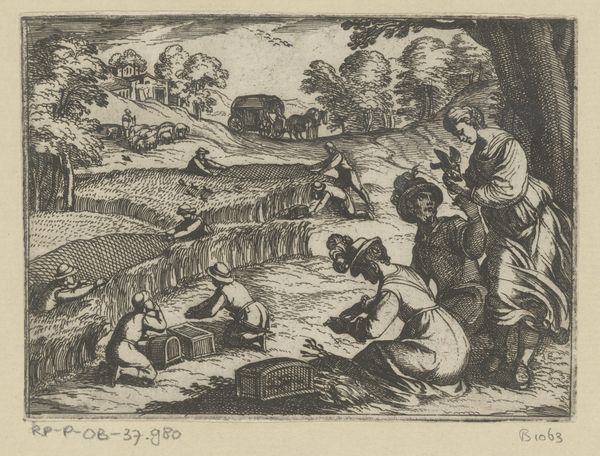
drawing, print, engraving
#
drawing
# print
#
landscape
#
figuration
#
11_renaissance
#
pen work
#
history-painting
#
northern-renaissance
#
engraving
Dimensions: Sheet (trimmed/oval): 11 1/2 × 13 3/8 in. (29.2 × 34 cm)
Copyright: Public Domain
Curator: This artwork, "Fishing Scene," is an engraving by Léon Davent, dating back to 1547. The work resides here at the Met. Editor: My first thought is of organized chaos. Look at how much activity Davent packs into this circular frame. It almost feels overwhelming, but the tonal variations are interesting. Curator: Indeed. This print really offers us a snapshot into 16th-century life and labor. Fishing wasn't merely a leisure activity; it was crucial for sustenance and commerce. Consider who has access to what within the Northern Renaissance’s rigid social strata. Who are these fishermen? What sort of communities might they belong to? Editor: The visual symbols at play are compelling. Notice the different types of boats—simple canoes alongside more ornate vessels. And consider the building in the distance, a European looking style. What statement might Davent be making by juxtaposing those visual elements? Are we supposed to consider this foreign colonization of Indigenous populations? Curator: It's important to recognize how Northern Renaissance art was not untouched by Europe's burgeoning global footprint and expanding economic structure; in many instances, works promoted colonialism to expand access to resources like, of course, food. Depictions of labor—of subjugation— were certainly commonplace. Editor: You are so right. I do notice that a lot of action happens around the center point and fans out toward the circular boundary—what an interesting technique! Also, I wonder, is there a conscious reference to fish as a symbol? Does it stand for any more than just food and/or wealth? Curator: It could, certainly, given the religious symbolism associated with the fish during this period. Remember the fish became representative of Jesus to the early church when it had to practice its faith in secret. While religion can and should provide solidarity, these concepts could easily, for Davent, become a commentary about commerce, society and identity as linked with land and labour. Editor: Considering your social context angle adds a new dimension to what could seem like a simple snapshot of daily life. Thank you! Curator: Thank you as well! Thinking through this symbolic representation helps us to reveal and consider our pasts, our present, and our possibilities of a more just future.
Comments
No comments
Be the first to comment and join the conversation on the ultimate creative platform.
